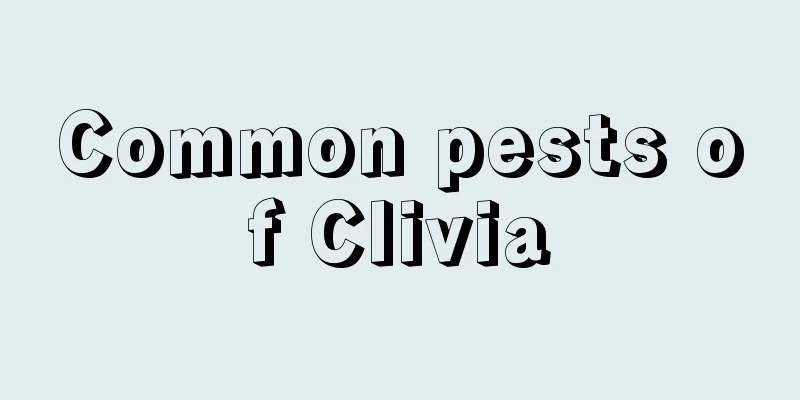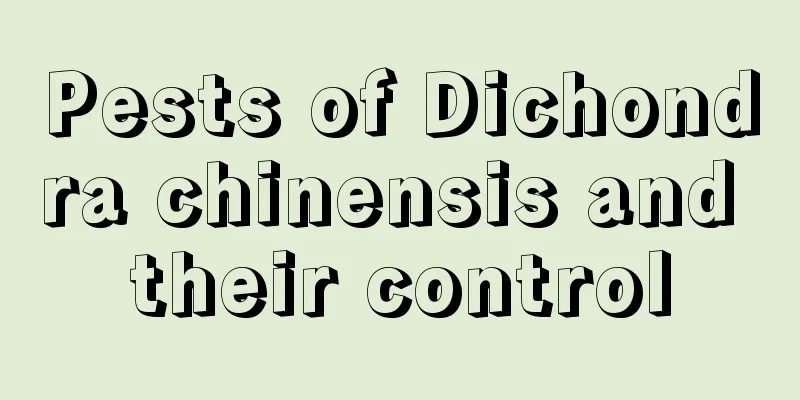Common pests of Clivia

Common pests of CliviaThe most common insect pests of Clivia are scale insects and earthworms. Scale insectsScale insects mainly gather in the tender buds of leaves, secreting pathogens while sucking juice, causing the stems and leaves to gradually turn black and the leaves to wither. Scale insects have a strong reproductive capacity and can produce multiple generations a year. One adult can reproduce hundreds of insects. If timely prevention and control measures are not taken, plant death is inevitable. Prevention and treatment methods Prevention of scale insects should be the main focus. Pay more attention to observing the plants at ordinary times, and deal with insect pests as soon as possible if they are found. When the disease occurs, it can be treated with a combination of manual and drug treatments. When small insects appear on the leaves, scrape them off directly or remove them with a thin bamboo stick. If a large number of insects appear, you can spray them with 2-methoate emulsion or oxydemeton-methyl emulsion. Usually, 1 to 2 sprays can kill them. earthwormWhen flower lovers see earthworms being classified as pests, they can’t help but be surprised. Yes, you read that right, earthworms are pests of Clivia. When Clivia is a seedling, its fleshy roots are relatively delicate. If there are earthworms in the pot, they will drill around everywhere, injuring the young roots, affecting the Clivia's absorption of nutrients and easily causing root rot. Prevention and treatment methodsNormally, earthworms do not grow naturally in the soil. However, you need to observe frequently. If round soil particles appear on the surface of the potting soil, immediately water it with DDT emulsion mixed with water. If earthworms start to move after watering, remove them immediately. Repeat the above steps again after a week to eradicate it. |
<<: Narcissus pest control methods
>>: What should I do if my purple pearl has worms?
Recommend
Differences between Cornus officinalis and Evodia rutaecarpa
1. Leaf Difference Cornus officinalis leaves are ...
The growing environment and local conditions of chrysanthemum
Chrysanthemum Growth Environment and Conditions C...
What does orchid germination look like, and how to grow fast after germination
1. What does orchid germination look like? When o...
How to grow bamboo begonia and precautions How to grow bamboo begonia
Bamboo Begonia is easy to grow. It is strong and ...
Rose and gardenia... snap, just one cut, the flower buds pop up, the pot is full of them!
Rose There are many varieties of roses with brigh...
When does the lotus bloom and how to grow it
1. Flowering period Under normal circumstances, l...
These 4 kinds of flowers love to produce small babies. If you grow them casually, even a big tank can’t hold them all!
The snake plant has produced a lot of little ones...
Quinoa growing conditions, growing environment and region
Quinoa Growing Conditions The growth cycle of qui...
Disease and Pest Control of Alsophila spinulosa
Disease control after transplanting Under natural...
Plant these flowers now, they grow fast and look different every day
asparagus Asparagus fern is recognized as a fast-...
How to grow White Moon Shadow Succulent?
The full name of the White Moon Shadow succulent ...
Seed propagation of red lotus
Seed propagation of red lotus Seed Collection See...
What to do if lucky bamboo leaves rot
1. Reasons 1. It may be because its leaves have n...
What are the effects of perlite on plants and what flowers are suitable for it?
1. Effects on plants 1. Maintain stability: Perli...
Four-season Begonia propagation methods and precautions (how to make Four-season Begonia take root quickly through cuttings)
Suitable temperature Begonia is native to the coo...









